- Details
- Hits: 1467

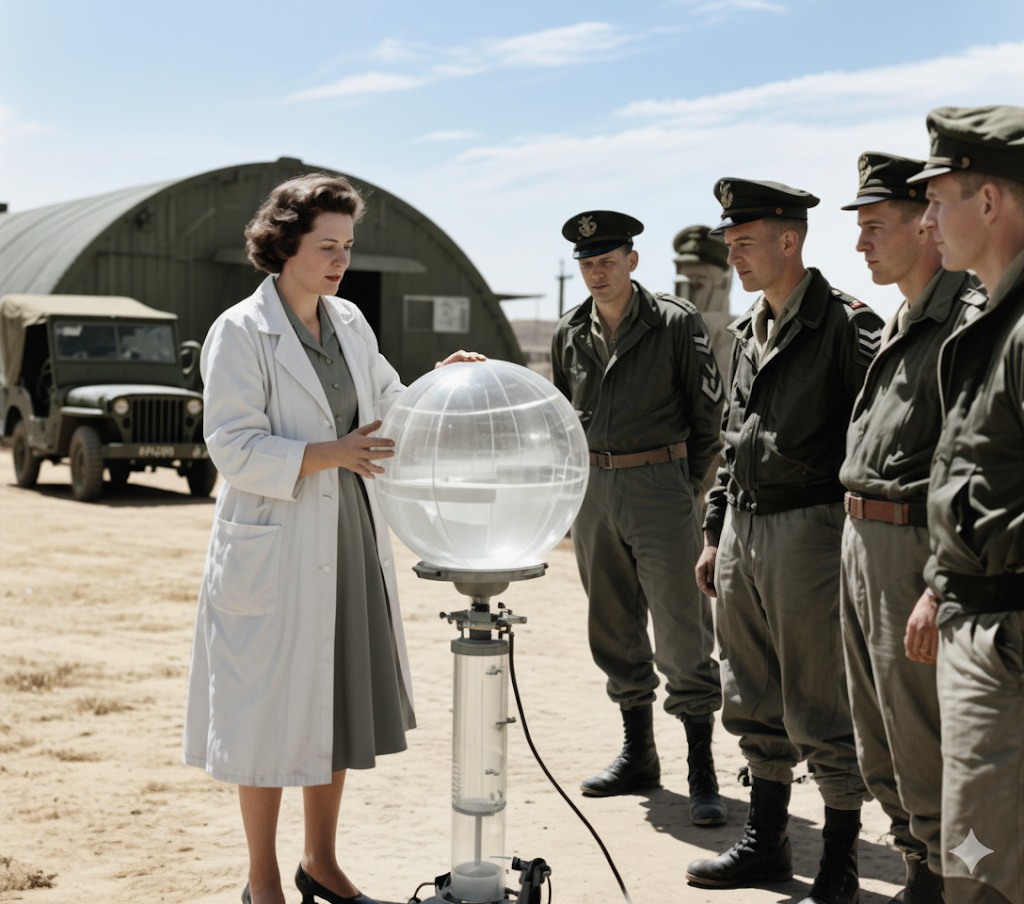 A Hungarian born American scientist, Mária Telkes (1900-1995), was called "The Sun Queen" and among other honors, was postmousthly inducted into the National Inventors Hall of Fame. She lived to 95 and for most of her life developed solar power in a variety of forms.
A Hungarian born American scientist, Mária Telkes (1900-1995), was called "The Sun Queen" and among other honors, was postmousthly inducted into the National Inventors Hall of Fame. She lived to 95 and for most of her life developed solar power in a variety of forms.
Trained as a biophysicist, she worked for Westinghouse Electrical and Manufacturing Company in Pittsburgh, PA, where she developed metal alloys for thermocouples to convert heat into electricity from 1937 to 1939. That changed her career. In 1939 whe joined the Massachusetts Institute of Technology (MIT) investigating solar conversion.
In 1948 she and architect Eleanor Raymond created one of the first solar-heated house, called the Dover Sun House, and exhibited at MIT in 1950 It had 18 glass panels on the roof to convert sunlight into heat, which then was transfer to 21 tons of sodium sulfate. As the salt turned to liquid, it stored the heat seven times more effective than water. Then, as the eutectic salt released heat, it re-crystalized. Very efficient which somehow has been lost in our electronic age.
Earlier effort she developed a simple, inflatable globe that could turn salty seawater into fresh, drinkable water. This invention was a simple evaporator and was included in military emergency kits. At WWII's, she received a Certificate of Merit in 1945 from the Office of Scientific Research and Development (OSRD).
In 1953 she created a solar oven for people, that even children, could use. It concentrated sunlight to bake small amounts of food. (Anyone remember their Girl Scout days making a solar oven? You can thank Mária Telkes!) Her work laid the foundation for many of today’s solar technologies, from residential heating systems to large-scale power generation. Over her career of more that 50 years, she received more than seven patents.
Read and watch:
https://www.invent.org/blog/inventors/maria-telkes-the-sun-queen
https://en.wikipedia.org/wiki/M%C3%A1ria_Telkes
https://www.youtube.com/watch?v=LVUCvR4QJSs
https://www.pbs.org/wgbh/americanexperience/films/sun-queen/
- Details
- Hits: 3211
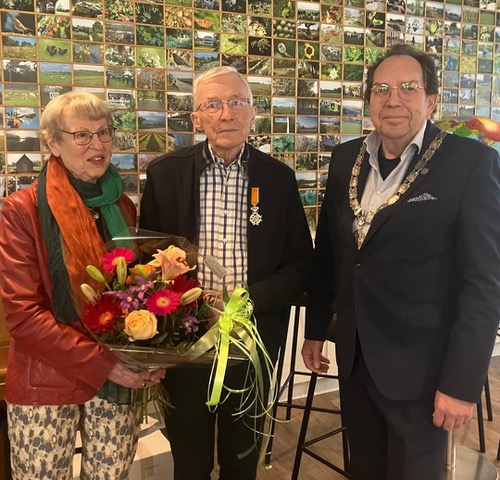 Several years ago Frans decided to write the course on sundials that included self assessment questions to force students not only to read the text, but to internalize the concepts. And a final submittal question "not necessarily a difficult question, but: no answer, no new lesson." Thus Frans Maes began writing lessons and sending them out to students.
Several years ago Frans decided to write the course on sundials that included self assessment questions to force students not only to read the text, but to internalize the concepts. And a final submittal question "not necessarily a difficult question, but: no answer, no new lesson." Thus Frans Maes began writing lessons and sending them out to students.
NASS has now used his material to create a similar course centered on North America, but still following the style of assessment questions and a final submitted question to proceed to the next lesson. Frans spark of educating people about sundials has gone international
In 2022 Frans was awarded the Sawyer Dialing Prize for his dedication to educating people about sundials. Frans received an award of 250 USD a custom made Spectra Sundial by Jim Tallman of Artisan Industrials.
NASS recently received an email from Hans Stikkelbroeck, former chairman Zonnewijzerkring (the Dutch Sundial Society): "Last Saturday (22 March 2025) Frans Maes received a Royal Decoration (Knight in the Order of Orange-Nassau) from the mayor of the municipality of West-Betuwe during the [Annual General Meeting] in Tricht. Partially due to your dedication and support, the king has awarded this distinction to Frans. For this, I would like to thank you, also on behalf of the members! Kind regards, Hans Stikkelbroeck"
Photo: Mrs. Maes, Mr. Frans Maes, Mayor of West-Betuwe, Netherlands
- Details
- Hits: 7907
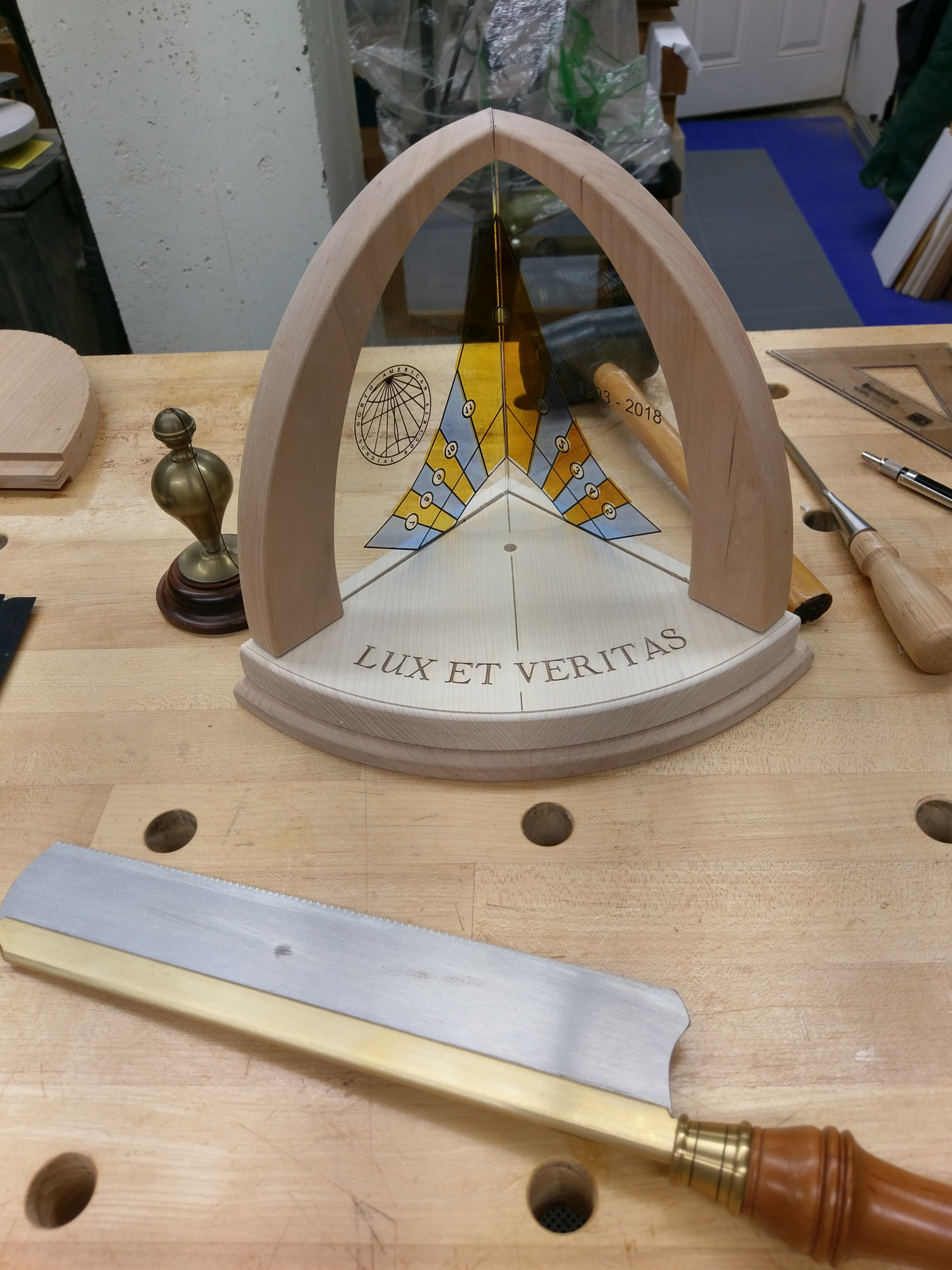 Don Snyder, long time NASS member, sundial designer and conference organizer, died Nov. 21, 2022 at the age of 87. He organized two St. Louis conferences for NASS in 2008 and 2017. For the first St. Louis conference, Don worked closely with Michael Olsen of the Missouri Botanical Garden to have five sundials available for viewing, including the dedication of a dial donated by Ron Rinehard, the Schmoyer sundial made by NASS member Bill Gottesman and donated to the Garden by Don and Bill, and in the Ottoman Garden, the Ottoman Sundial designed by NASS member Roger Bailey based on the 1845 dial at Topkapi Palace, Istanbul.
Don Snyder, long time NASS member, sundial designer and conference organizer, died Nov. 21, 2022 at the age of 87. He organized two St. Louis conferences for NASS in 2008 and 2017. For the first St. Louis conference, Don worked closely with Michael Olsen of the Missouri Botanical Garden to have five sundials available for viewing, including the dedication of a dial donated by Ron Rinehard, the Schmoyer sundial made by NASS member Bill Gottesman and donated to the Garden by Don and Bill, and in the Ottoman Garden, the Ottoman Sundial designed by NASS member Roger Bailey based on the 1845 dial at Topkapi Palace, Istanbul.
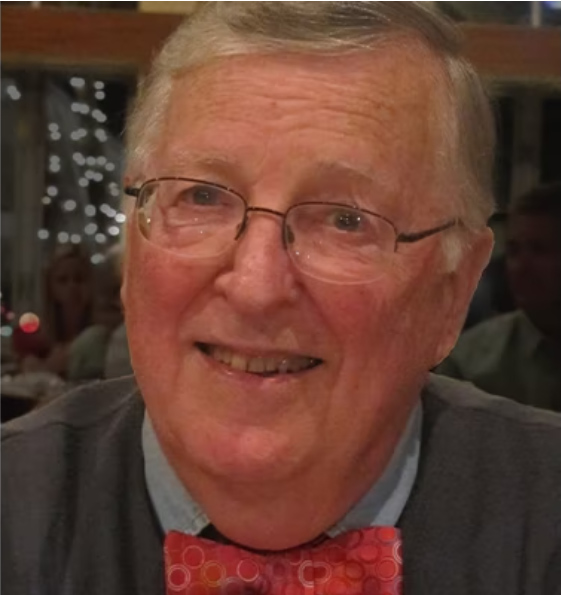 At the 2017 NASS conference in St. Louis, Don organized a ring-side seat at Jefferson Barracks to watch the total solar eclipse. Don worked with Perry County and Perryville, a town on the eclipse path, to create a new sundial for the courthouse gardens in honor of the eclipsing sun. Local craftspeople then created the dial following Don's design.
At the 2017 NASS conference in St. Louis, Don organized a ring-side seat at Jefferson Barracks to watch the total solar eclipse. Don worked with Perry County and Perryville, a town on the eclipse path, to create a new sundial for the courthouse gardens in honor of the eclipsing sun. Local craftspeople then created the dial following Don's design.
Don was always available to help other sundialists, offering advice and technical assistance. He helped restore a sundial at Concordia Seminary, established a Sundial Trail of dials around St. Louis, and for a decade checked the links on the NASS website for accuracy and relevance. With his hobby of woodworking, Don made a dial for the 25th anniversary of NASS (1993-2018) that projected solar time in colors on the dial face.
Don was a senior professor in the Department of Electrical Engineering at Washington University in St. Louis. He was the Samuel C. Sachs Professor of Electrical Engineering and chair of the department from 1976 to 1986 as well as a professor of radiology at the School of Medicine. As the founding director of the Electronic Systems and Signals Research Laboratory from 1986 to 1998 he tackled imagery problems in biomedicine, astronomy and remote sensing. In the Washington University Newsletter, they noted that when the Hubble space telescope was launched and had a blurry focal plane, Don proposed a novel image reconstruction approach. A version of this sharpening algorithm has been used on all subsequent images.
https://www.legacy.com/us/obituaries/name/donald-snyder-obituary?id=38326477
https://engineering.wustl.edu/news/2022/Donald-Snyder-87-senior-professor-of-electrical-systems-engineering.html
- Details
- Hits: 6724
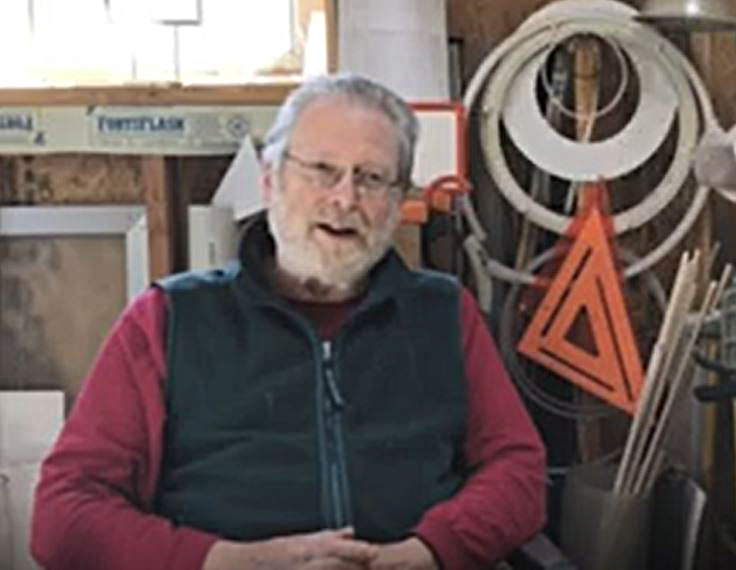 What makes a sundial? Practically anything. Sasch Stephens discusses how he became interested in dialing. Since then he has turned many objects into solar time devices. It takes some creative thinking to invision how a common object can become a working sundial. One of the most recent projects turned a 54 x 28 foot south side of a building it into a giant sundial mural in association with Allied Arts and the talents of artist Gretchen Leggitt. The dial was dedicated on September 22, 2018. View his interview at https://sundials.org/index.php/videos/making-and-using-sundials
What makes a sundial? Practically anything. Sasch Stephens discusses how he became interested in dialing. Since then he has turned many objects into solar time devices. It takes some creative thinking to invision how a common object can become a working sundial. One of the most recent projects turned a 54 x 28 foot south side of a building it into a giant sundial mural in association with Allied Arts and the talents of artist Gretchen Leggitt. The dial was dedicated on September 22, 2018. View his interview at https://sundials.org/index.php/videos/making-and-using-sundials
- Details
- Hits: 7682
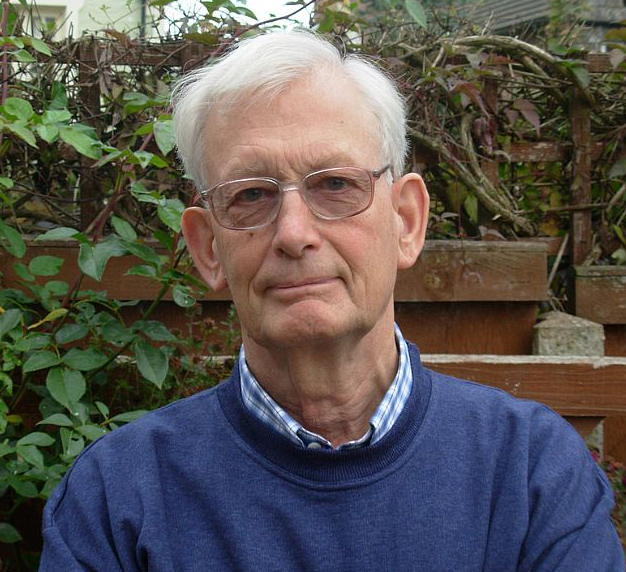 NASS is saddened to report the passing of one of the UK’s pre-eminent sundial designer, Christopher St. J H Daniel who died on May 17, 2022. His works are to be found all over the UK, ranging from private commissions to major public works and to restorations and reconstruction of old and damaged sundials.
NASS is saddened to report the passing of one of the UK’s pre-eminent sundial designer, Christopher St. J H Daniel who died on May 17, 2022. His works are to be found all over the UK, ranging from private commissions to major public works and to restorations and reconstruction of old and damaged sundials.
After a 13-year career at sea, Christopher Daniel joined the staff of the National Maritime Museum at Greenwich in 1964, working in the Department of Navigation & Astronomy. From 1967 onwards, his early curatorial responsibilities encouraged him to make a particular study of sundials and dialing literature. Christopher designed the now well- known "dolphin" equinoctial mean-time sundial at Greenwich, celebrating the Queen’s Silver Jubilee in 1977. In 1989 he and three others founded the British Sundial Society. From 1990, Christopher served as its Chairman, and more recently as President. His expertise and artistry in sundial design will be missed.
- Details
- Hits: 6329
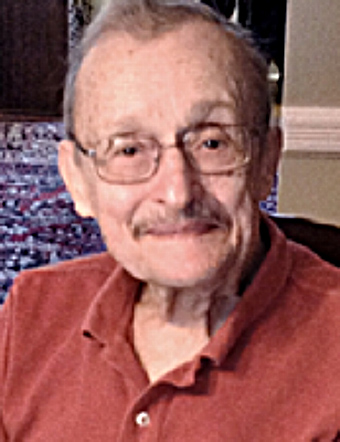 NASS is saddened to report that longtime member Harold Brandmaier died on April 11, 2022. Throughout his long life, besides his ever-present sundials, Hal enjoyed stained glass, ship models, photography, travel, folk dance, and playing the hammered dulcimer and hand drums – always in company with his beloved wife Ginny. Hal had been a member since NASS founding and stepped in to help the new society, serving in the early years as secretary and then treasurer. NASS early conference retrospectives featured his narratives, matched with Ginny’s photos. In 2004, Hal and Ginny teamed up with Robert Adzema to host a memorable 10th anniversary conference in Tenafly NJ, complete with West African dance and xylophone performance.
NASS is saddened to report that longtime member Harold Brandmaier died on April 11, 2022. Throughout his long life, besides his ever-present sundials, Hal enjoyed stained glass, ship models, photography, travel, folk dance, and playing the hammered dulcimer and hand drums – always in company with his beloved wife Ginny. Hal had been a member since NASS founding and stepped in to help the new society, serving in the early years as secretary and then treasurer. NASS early conference retrospectives featured his narratives, matched with Ginny’s photos. In 2004, Hal and Ginny teamed up with Robert Adzema to host a memorable 10th anniversary conference in Tenafly NJ, complete with West African dance and xylophone performance.
Over the years, Hal contributed a dozen articles to The Compendium, covering such topics as the sundials in India, spherical gnomon dials, a review of dialing software, operating limits for planar dials, and an approach to design using matrix mathematics. Most recently he authored a review in 2019 of Sara Schechner’s book Time of Our Lives. He designed and installed many dials and published two books: A Sundial For Your Garden (1995) and Sundial Design (2003). In recent years, Hal donated many books from his dialing collection for sale at our conferences to benefit NASS and to assure that the books found their way to homes that would appreciate them.
To mark his passing and to celebrate his life, Hal’s family has chosen a motto from a 19th century English sundial: Time passes by; Now Sun now shade in turn: Let it go by; Lo, Love is over all eternal. In honor of Hal, that same motto appears on the back cover of this issue of The Compendium. May he rest in peace.
- Details
- Hits: 6919
 Frans Maes of the Netherland Sundial Society writes: "We deeply regret to inform you that Hans de Rijk, founding member in 1978 and honorary member of the Netherlands' Sundial Society, passed away on November 23, at the age of 95. He served in the Board of the Society for many years and wrote some 150 articles in its Bulletin. Among these were important contributions, such as a latitude independent sundial, and the family of equator projection dials. A more playful result of his creativity were 'postcard dials', which he used to design while waiting for his Chinese take-away dinner."
Frans Maes of the Netherland Sundial Society writes: "We deeply regret to inform you that Hans de Rijk, founding member in 1978 and honorary member of the Netherlands' Sundial Society, passed away on November 23, at the age of 95. He served in the Board of the Society for many years and wrote some 150 articles in its Bulletin. Among these were important contributions, such as a latitude independent sundial, and the family of equator projection dials. A more playful result of his creativity were 'postcard dials', which he used to design while waiting for his Chinese take-away dinner."
"Hans was a popularizer of mathematics and astronomy and wrote many books about these subjects, under the pseudonym Bruno Ernst. His motto was: "Nescius omnium curiosus sum", I don't know anything but I am anxious to know everything. His eagerness to learn was equalled by his striving and ability to teach. He has been a teacher of mathematics and physics, founded the mathematics magazine 'Pythagoras' and the physics magazine 'Archimedes', aimed at secondary school students. He founded the first public astronomical observatory in the Netherlands. He also founded the organization 'Ars et mathesis', where art and mathematics meet, and its magazine with the same name. He became friends with the famous Dutch artist Maurits Cornelis Escher and wrote several books about Escher's work. Later on, he wrote extensively about impossible figures."
"Planetoid 11245 bears his name.".
"We lose a generous, inspiring, modest and productive diallist and friend."
The Netherland Sundial Society web pages is available in English at: https://www.dezonnewijzerkring.nl/pages/en/welcome.php?lang=EN
- Details
- Hits: 14106
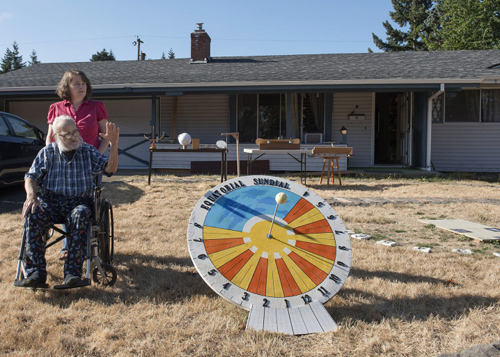 He may be wheelchair bound, but that doesn't diminish Tom Laidlaw's enthusiasim for sundials. In front of his house on Carolina Lane is the Vancouver Heights neighborhood landmark - a sundial garden. And what has he planted?
He may be wheelchair bound, but that doesn't diminish Tom Laidlaw's enthusiasim for sundials. In front of his house on Carolina Lane is the Vancouver Heights neighborhood landmark - a sundial garden. And what has he planted?
There is a bright circular equatorial sundial that shows the time from 4am to 8pm (and even an offset for daylight saving time). On the grass is an analemmatic sundial sundial marking time from 6am to 6pm for anyone who wants to stand to the plywood walkway. On a table near the house are a series of globe, equatorial and horizontal sundials as well as other sundial types that he will gladly explain. For example, Tom has turned a skate board into a polar dial by adding a "T" gnomon in the middle. And then there is a model of the Jefferson dial where you swing the gnomon around a globe to cast only a thin line shadow
Katie Gillespie, of the Columbian, reports "The 80-year-old retired electrician has always been a 'do-it-yourself kind of guy,' he said. For a while, it was skateboards he fancied, and bookshelves, and a Benjamin Franklin chair that transforms from a chair into a stepladder. He’s self-taught, he said, researching new projects online, then diving in.... 'It’s fun to watch him talk to people about it,' said Debra Brouhard, Laidlaw’s daughter and neighbor."
His latest obsession is sundials. As a member of the North American Sundial Society, Tom now designs a multitude of sundials. Visitors see his yard dotted with all types of sundials. They come in all sizes: big and small. His analemmatic sundial on the lawn always draws attention. Nearby, a plumb bob dangles from a beam. allowing Tom to tell time solar noon. when the shadow draws a line on the lawn pointing due north.
Gillespie found that, "Laidlaw’s passion for sundials began in 2009, when his grandson, Doug Brouhard, stuck a stick in the ground while they were camping. Doug Brouhard was about 12 at the time, and the dial didn’t quite work, Laidlaw said. It was the right idea, though, and a new hobby was born. 'I still have the stick that started it all,' Doug Brouhard said."
Read more of Katie Gillespie's article and see more photos of Tom Laidlaw and his sundials at http://www.columbian.com/news/2017/aug/30/sundial-garden-shines-in-vancouver-heights/
- Details
- Hits: 17336
|
|
Richard Mallet, former British Sundial Society Trustee, Council Member and former BSS Webmaster passed away on Nov 7th, 2016 with funeral held on Dec 12th, 2016. He lived in Eaton Bray, UK and had many interest in physics, mathematics, and sundialing. Those of us maintaining websites know of the difficulty in perserving order, yet always allowing for expansion of new material. "After a near disaster with the [British] Sundial Society's then heavily modified and entirely non-compliant website, Richard stepped in at no charge to the Society to rewrite it using the then new Expression Web software from Microsoft. This proved very successful and was of course fully W3C compliant."
Over the next year, the North American Sundial Society website will migrate from an older version of the Joomla Content Management System to the fully maintainable Joomla 3.x version. The majority of content and organization will remain intact, but new innovations are expected.
Read more about Richard Mallet's life at: http://www.ppowers.com/mallett.htm
Page 1 of 2

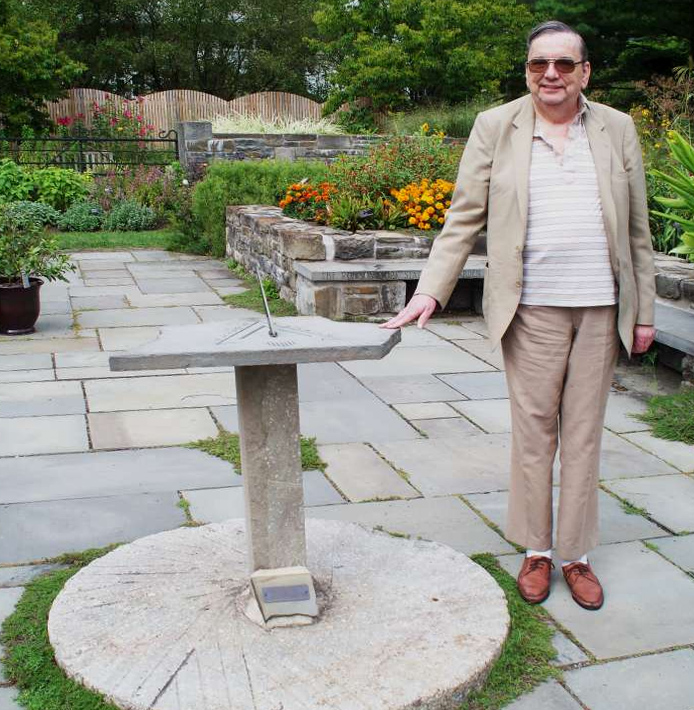 Richard Mallet at Cornell Univ. Sundial
Richard Mallet at Cornell Univ. Sundial